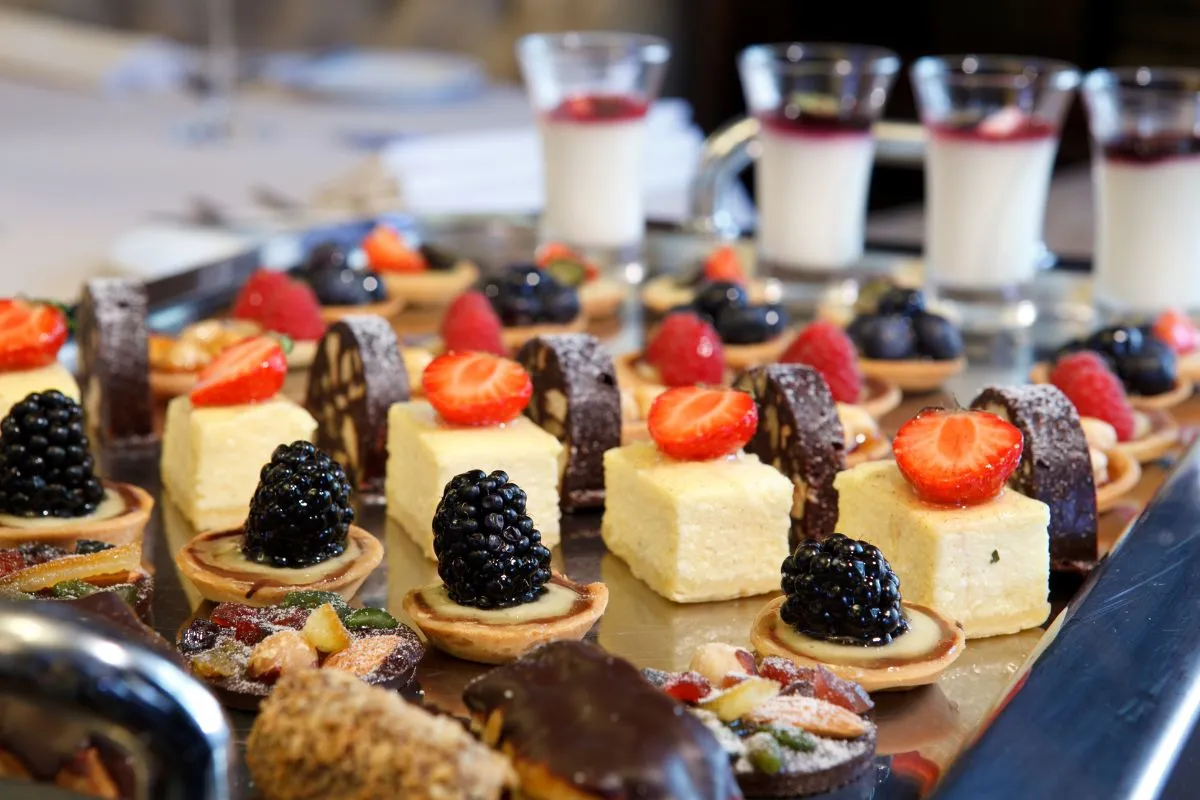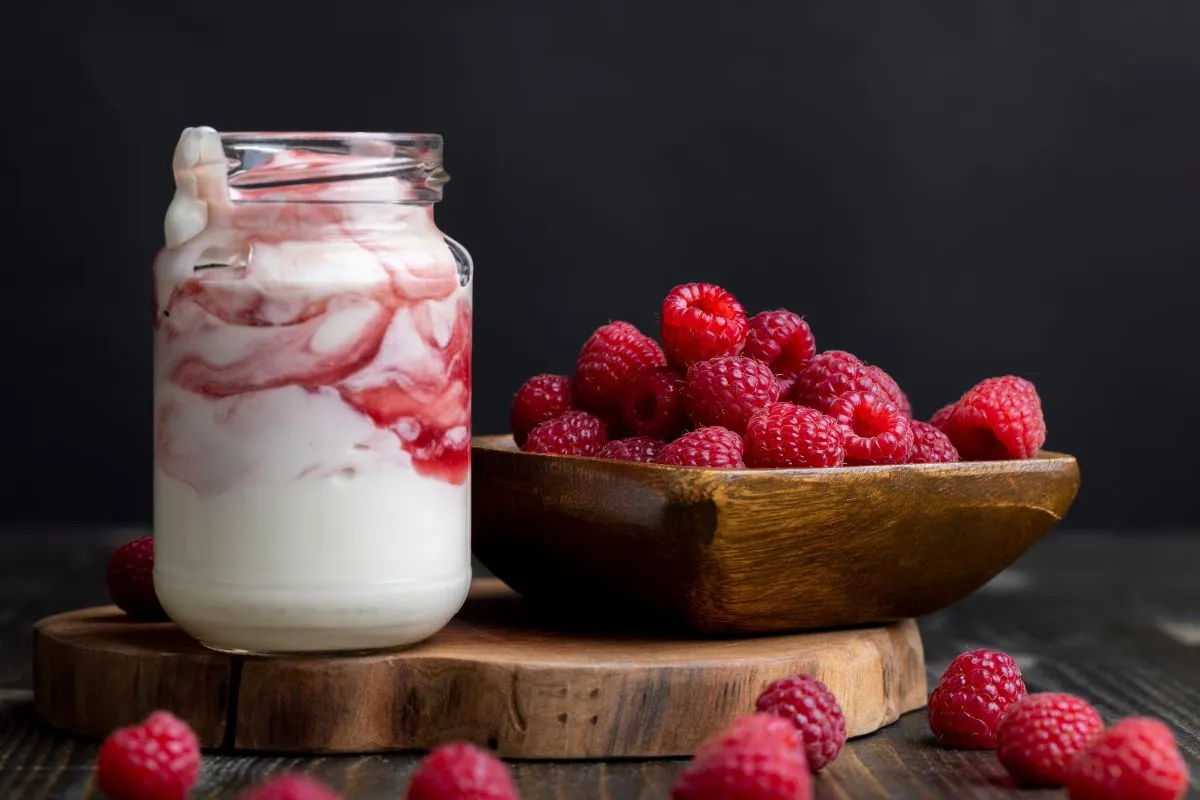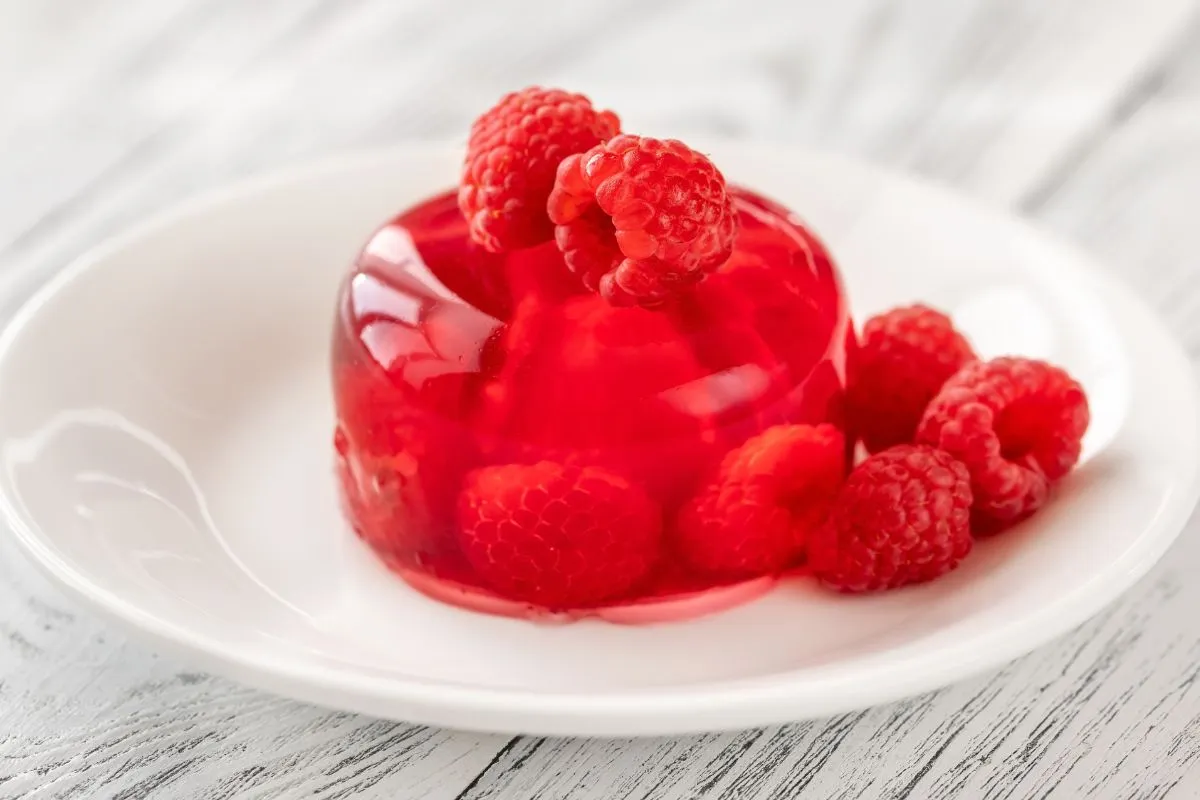Introduction
Raspberry flavor stands out in the culinary world for its unique combination of sweetness and tartness, making it a favorite among chefs and food enthusiasts alike. This distinctive taste profile not only delights the palate but also plays a pivotal role in the food industry, where it is utilized in a myriad of products ranging from gourmet dishes to everyday snacks.
Overview of Raspberry Flavor
The flavor of raspberry is complex, characterized by its sweet, tart, and slightly floral notes. This complexity makes it versatile in culinary applications, allowing it to shine in both sweet and savory dishes. Its rich, fruity essence is derived from the natural compounds found within the berries, including ketones and terpenes, which contribute to its aromatic profile.
- Sweetness: Comes from natural sugars in the berries, providing a base for the flavor profile.
- Tartness: A result of the organic acids present in raspberries, adding depth and brightness.
- Floral Notes: Subtle undertones that give raspberry flavor its distinctive character.
Raspberry flavor can vary depending on the variety of the berry, with each type offering its own unique balance of sweetness and acidity. This variability allows for a wide range of applications, from refreshing beverages to decadent desserts.
Importance in Culinary and Food Industry
Raspberry flavor holds significant importance in both the culinary world and the food industry at large, owing to its popularity and versatility:
- Culinary Applications: In the kitchen, raspberry flavor is a key ingredient in a variety of dishes. It’s used in sauces, desserts, salads, and even savory dishes, where its vibrant flavor can enhance the overall taste profile.
- Food Industry: Beyond the kitchen, raspberry flavor is a staple in the production of candies, beverages, yogurts, and other processed foods. Its appeal lies in its ability to impart a rich, fruity flavor that can either stand alone or complement other flavors.
The demand for natural and authentic flavors has led to an increased interest in real raspberry extracts and purees in the food industry, as consumers seek out products with clean labels and recognizable ingredients.
- Flavor Pairings: Raspberry flavor pairs well with a variety of ingredients, including chocolate, vanilla, citrus, and certain herbs, making it a versatile choice for innovative flavor combinations.
- Innovation in Flavoring: Food scientists and flavorists continue to explore ways to capture the essence of raspberry flavor, developing extracts and flavoring agents that deliver the fruit’s authentic taste to a wide range of products.
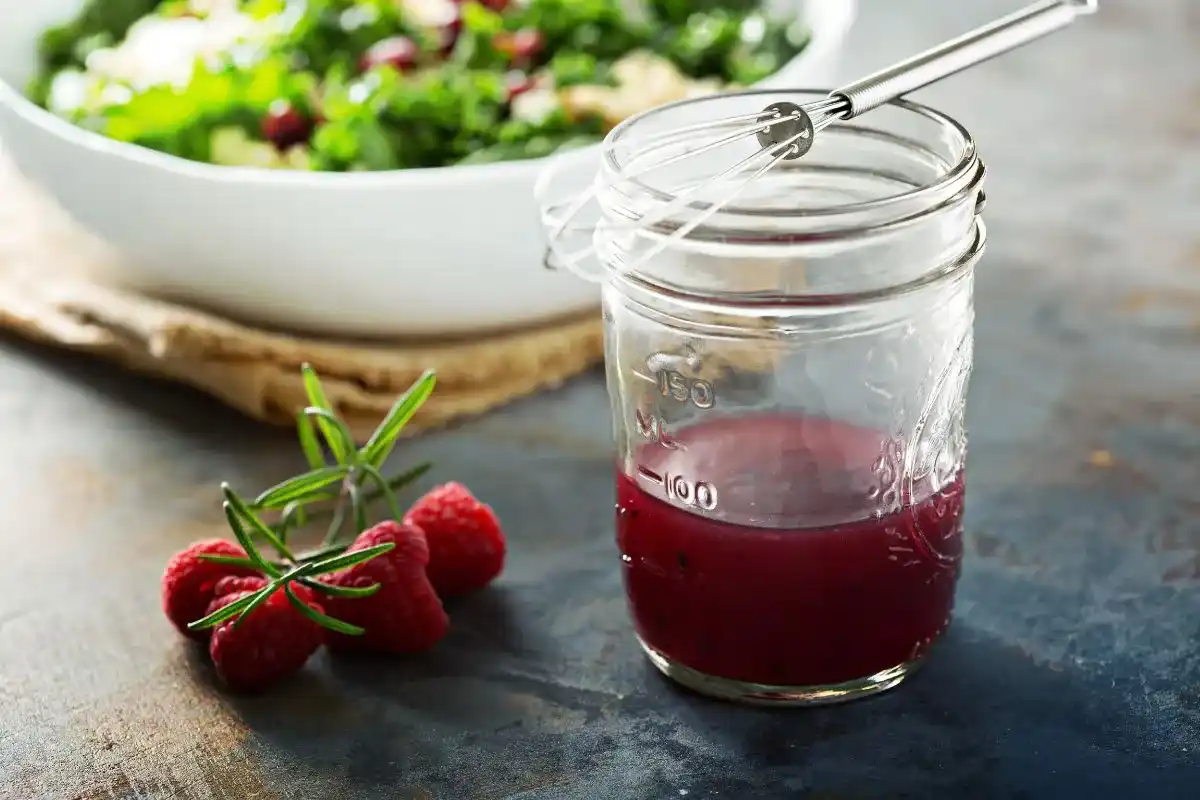
Natural Sources of Raspberry Flavor
The unique charm of raspberry flavor stems from its complex mix of sweet, tart, and floral notes. This deep and nuanced taste comes not from randomness but from specific compounds and conditions that shape the flavor in raspberries. Diving into these elements helps us understand “What makes raspberry flavor?”
Components of Natural Raspberry Flavor
Natural raspberry flavor emerges from a blend of various compounds. These work together to produce the fruit’s characteristic taste and aroma:
- Sugar and Organic Acids: Natural sugars and organic acids in raspberries create their iconic sweet-tart flavor. The sugars add sweetness, while acids like citric and malic acid bring refreshing tartness.
- Aromatic Compounds: Volatile compounds, including ketones, terpenes, and aldehydes, contribute to the raspberry’s aroma. Raspberry ketone, especially, impacts the scent and flavor significantly.
Variety, ripeness, and handling after harvest influence these components. Each raspberry variety has its unique chemical makeup, affecting the flavor and aroma.
Key Compounds Contributing to the Natural Flavor
A few key compounds mainly influence raspberry flavor:
- Raspberry Ketone: This compound, highly concentrated in the fruit, defines the raspberry aroma and is often used in flavorings and fragrances.
- Anthocyanins: These pigments color raspberries and play a part in flavor.
- Ellagitannins: Found in raspberries, these tannins affect mouthfeel and flavor complexity.
The combination and concentration of these compounds determine the raspberry flavor’s intensity and nuances, offering a unique taste experience with each berry.
Role of Genetics and Environment in Flavor Development
Genetics and environmental factors significantly shape raspberry flavor:
- Genetics: Various raspberry varieties have been developed for flavor, color, and pest resistance. A variety’s genetic makeup crucially determines its flavor potential.
- Environment: Soil type, climate, and farming practices impact the flavor compounds’ concentration. Raspberries grown in cooler climates often have more pronounced flavors due to slower ripening, allowing more time for flavor compounds to build up.
Understanding natural raspberry flavor sources highlights the complexity and variability of this beloved fruit. The interaction between key compounds and the effects of genetics and environmental conditions on their development reveal why raspberry flavor is so distinctive and sought-after in culinary applications and food products worldwide.
Extraction and Use of Natural Flavor
Capturing the essence of raspberry flavor for use in food and beverage products involves specialized extraction methods. These techniques are designed to isolate the volatile compounds responsible for the fruit’s characteristic aroma and taste, ensuring that the natural flavor can be enjoyed in a variety of applications.
Methods of Extracting Flavor from Raspberries
The process of flavor extraction from raspberries focuses on preserving the fruit’s delicate balance of sweet, tart, and floral notes. Several methods are commonly employed:
- Distillation: Steam distillation is used to vaporize the volatile compounds, which are then condensed and collected. This method is effective for capturing the essence of raspberry flavor without the fruit’s sugars and acids.
- Solvent Extraction: Solvent extraction involves using a chemical solvent to dissolve the flavor compounds. The solvent is then removed, leaving behind the concentrated flavor.
- Cold Pressing: This mechanical process presses the fruit to release its juices and oils, capturing the flavor without the use of heat or chemicals.
- Enfleurage: Although less common for raspberries, enfleurage is a traditional method that involves absorbing flavor compounds into fats, which are then extracted with alcohol to obtain the flavor essence.
Each method has its advantages, and the choice often depends on the desired intensity of the flavor, the specific compounds targeted for extraction, and the final application of the extract.
Applications in Food and Beverages
The natural raspberry flavor extracted through these methods finds widespread use in the culinary world, enhancing a wide range of products:
- Food: Raspberry flavor adds depth to desserts, confectionery, yogurts, and sauces. It’s also used in baking to infuse cakes and pastries with the fruit’s signature taste.
- Beverages: From sodas and fruit drinks to cocktails and flavored waters, raspberry flavor is a popular choice for adding a fruity twist.
- Nutraceuticals: In health and wellness products, raspberry flavor masks the taste of active ingredients, making supplements more palatable.
These natural extracts offer a way to incorporate the nuanced taste of raspberries into a vast array of products, satisfying consumers’ cravings for real fruit flavors and supporting the trend towards cleaner, more natural ingredient lists in food and beverage manufacturing.
Artificial Raspberry Flavor
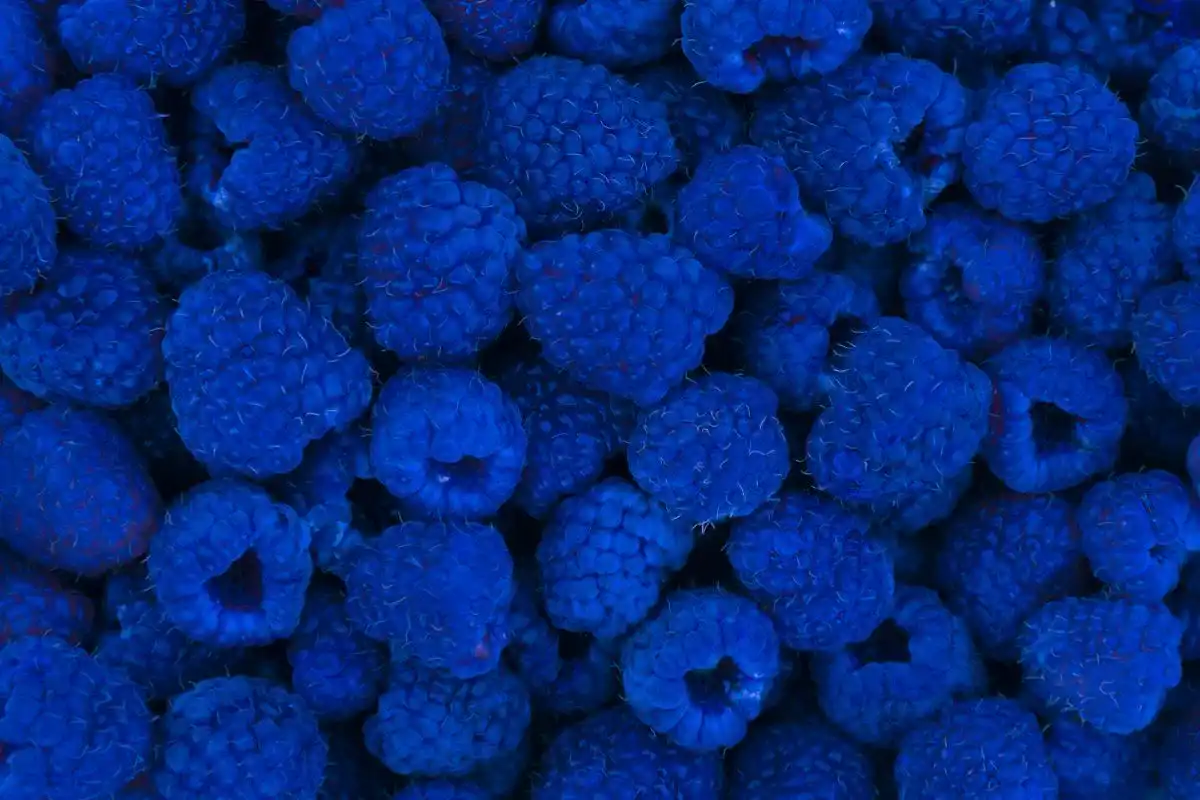
Creating Artificial Raspberry Flavor
The science behind creating artificial raspberry flavor is both fascinating and complex. Manufacturers synthesize a variety of chemical compounds to mimic the flavor profile of natural raspberries. Here’s a deeper dive into how this process unfolds:
- Chemical Components: The essence of raspberry flavor comes from a mix of volatile compounds, with ketones, especially raspberry ketone, playing a pivotal role. Synthetic raspberry flavor often includes these compounds to replicate the fruit’s signature taste.
- Flavor Enhancement: Beyond basic chemical mimics, flavorists add depth with additional compounds that suggest sweetness, tanginess, and the lush mouthfeel of real raspberries. This multifaceted approach helps create a more authentic flavor experience.
Common Ingredients in Artificial Flavoring
Artificial raspberry flavors rely on a toolkit of ingredients:
- Raspberry Ketone: Synthetically produced to replicate the primary aroma compound found in raspberries.
- Ethyl Butyrate: Adds a fresh, fruity burst, enhancing the berry profile.
- Vanillin: Offers a hint of vanilla undertone, rounding out the sharpness of the berry flavor.
These ingredients combine in precise proportions, creating a flavor profile that is distinctly “raspberry” to the palate.
Comparison between Natural and Artificial Raspberry Flavors
While both aim to capture the essence of raspberry, natural and artificial flavors have their distinctions:
- Taste Complexity: Natural raspberry flavors are more complex, given the wide range of volatile compounds present in the fruit. Artificial flavors, though sophisticated, often focus on replicating a narrower set of taste notes.
- Consistency and Availability: Artificial flavors offer consistency and year-round availability, unlike natural extracts which can vary by season and source.
- Cost-Effectiveness: Synthesizing raspberry flavor can be more cost-effective than extracting and preserving the natural essence, making artificial flavors a popular choice in commercial food production.
Incorporating artificial raspberry flavor allows manufacturers to provide consumers with raspberry-flavored products that are both delicious and economically viable. While some purists prefer the nuanced profile of natural raspberry, artificial flavors play an essential role in the food industry, bringing raspberry’s beloved taste to a wide array of products.
Controversial Ingredients
The quest to capture the essence of raspberry flavor has led to the use of various extraction methods and ingredients, some of which have sparked controversy. Castoreum, a substance derived from the secretions of beaver anal glands, stands out due to its unique application in flavoring and its subsequent public perception.
Discussion on Castoreum and Its Usage
Castoreum has historically been a component in creating raspberry and vanilla flavors, among others. Manufacturers value it for its intense aromatic properties. However, its animal origin has raised eyebrows. The substance comes from beavers, specifically the glands near their tails. Despite its effectiveness in replicating certain flavors, the method of obtaining castoreum has led to ethical and transparency concerns among consumers.
Public Perception and Industry Response
Public reaction to the use of castoreum in food products has been largely negative. Many consumers are surprised or disturbed upon learning about its animal-based origins. This concern has grown with the increasing demand for natural and transparent ingredient lists. In response, the food industry has gradually shifted away from castoreum, opting instead for plant-based alternatives that can mimic raspberry flavor without the controversy. This shift also aligns with a broader industry trend towards cleaner labeling and ethical ingredient sourcing.
The discussion around castoreum underscores the challenges faced by flavorists and food manufacturers in balancing authenticity, ethical sourcing, and consumer preferences. It highlights the ongoing evolution of the food industry as it adapts to changing tastes and values.
The Science Behind Raspberry Flavor
The enchanting taste and aroma of raspberries, beloved by many, are not just culinary delights but also feats of nature’s chemistry. A closer look at the chemical composition of raspberry flavor reveals a complex blend of compounds that work in harmony to produce its signature taste and smell.
Chemical Composition
Raspberry flavor is a masterpiece of nature, crafted from a variety of chemical compounds that each contribute to its overall sensory profile. The main players in this natural symphony include:
- Raspberry Ketone: This is the star compound, responsible for the fruit’s characteristic aroma. Despite its name, raspberry ketone is not exclusive to raspberries but plays a significant role in their distinctive smell.
- Anthocyanins: These pigments give raspberries their vibrant red color and have a subtle impact on flavor perception.
- Ellagitannins: These contribute to the berry’s slightly tannic mouthfeel, adding depth to the flavor.
- Volatile Organic Compounds (VOCs): A variety of VOCs, including esters, alcohols, and terpenes, combine to create the nuanced flavor profile of raspberries. They are responsible for the fruit’s sweet, floral, and sometimes green notes.
Detailed Breakdown of Chemical Compounds in Raspberry Flavor
- Raspberry Ketone: Present in small quantities, it has a significant impact on the raspberry’s aroma, offering a sweet and enticing scent.
- Anthocyanins: Beyond coloring, they affect the flavor’s complexity and can influence the fruit’s antioxidant properties.
- Ellagitannins: Adding to the raspberry’s astringency, these compounds enhance the texture and richness of the flavor.
- VOCs: These compounds are volatile, meaning they readily evaporate at room temperature, carrying the fruit’s aroma to our noses. Their complexity allows for the raspberry’s multifaceted flavor, from sweet and fruity to floral and tangy nuances.
How These Compounds Affect Taste and Aroma
The interplay between these compounds creates the raspberry flavor’s allure. Raspberry ketone’s impact is mostly aromatic, enchanting the sense of smell with its sweet, berry-like fragrance. This aroma plays a crucial role in how we perceive taste, essentially priming the palate for the fruit’s sweetness and tartness.
Anthocyanins and ellagitannins, while more subtle in their flavor contributions, add to the raspberry’s overall sensory experience by enhancing its color and texture, respectively. The color of food can significantly influence our taste perceptions, making the raspberry’s red hue an integral part of its appeal.
The volatile organic compounds are the true flavor artisans, evaporating as the raspberry is eaten or cooked, releasing a complex bouquet of scents that combine with taste receptors to produce a rich, layered flavor experience. This blend of sweetness, tartness, and aromatic notes is what makes raspberry flavor so distinctive and sought after in culinary applications.
Innovation in Flavoring
Advances in Flavor Extraction and Synthesis
The realm of flavoring, particularly raspberry flavor, has seen significant advancements in both extraction and synthesis techniques. Modern biotechnology and chemical analysis have paved the way for more authentic and complex flavor profiles, revolutionizing how we replicate the essence of raspberries.
- Microbial Fermentation: A cutting-edge method, microbial fermentation, is now being used to produce raspberry flavors. Companies like Insempra have harnessed this technology to create alpha-ionone, a key raspberry flavor compound, showcasing the potential of fermentation in flavor production (Forbes).
- Natural Flavor Extraction: With an emphasis on clean labeling, the extraction of natural raspberry flavors has become more sophisticated. Techniques like supercritical CO2 extraction offer a way to capture the volatile aromas and tastes of raspberries without using solvents, ensuring a pure and potent flavoring agent.
- Synthetic Biology: This field is rapidly evolving, allowing scientists to engineer yeast and bacteria that produce raspberry flavor compounds. This not only makes the flavoring process more sustainable but also opens up possibilities for flavors that are difficult to extract from nature.
Future Trends in Raspberry Flavoring
The future of raspberry flavoring lies in sustainability, authenticity, and innovation. Here’s what to expect:
- Sustainability: The demand for environmentally friendly flavoring methods will continue to rise. Biotechnological advancements, such as the use of genetically modified organisms (GMOs) to produce raspberry flavors, will play a crucial role in meeting this demand while reducing the industry’s carbon footprint.
- Authenticity and Complexity: Consumers increasingly prefer natural and authentic flavors. The industry’s challenge is to meet these expectations through innovative extraction and synthesis methods that can capture the full spectrum of raspberry’s flavor profile.
- Customization: Advances in flavor technology will allow for more personalized flavor experiences. Imagine being able to adjust the flavor profile of your raspberry-flavored product to your liking, tailoring the balance of sweet, tart, and floral notes.
The journey of raspberry flavoring from simple extracts to complex, biotechnologically produced compounds illustrates the dynamic nature of the food industry’s quest for perfection. As we look to the future, the possibilities for creating, enhancing, and experiencing raspberry flavor seem limitless, driven by a combination of scientific innovation and a deepening appreciation for nature’s bounty.
Culinary Applications
Raspberry Flavor in Cooking and Baking
Raspberry flavor enriches a myriad of dishes, from sweet to savory, enhancing the culinary experience with its unique taste. Here’s how to incorporate this delightful flavor into your cooking and baking endeavors:
- Desserts: Raspberry flavor is a classic choice for desserts. Whether you’re making a raspberry coulis to drizzle over cheesecake or infusing the flavor into delicate macarons, the berry’s tangy-sweet profile can elevate simple sweets into gourmet treats.
- Savory Dishes: Surprisingly versatile, raspberry flavor can also complement savory dishes. A raspberry vinaigrette adds a burst of brightness to salads, while raspberry glazes can transform poultry and pork into mouthwatering entrées.
Tips for Incorporating Raspberry Flavor into Recipes
To infuse your dishes with the essence of raspberry:
- Balance: Pair raspberry flavor with ingredients that balance its tartness. Chocolate, vanilla, and certain spices like cardamom can enhance the berry’s profile without overpowering it.
- Fresh vs. Artificial: Choose between fresh raspberries, raspberry extracts, or artificial flavorings based on the desired intensity and application. Fresh berries offer subtle nuances, while concentrated flavors can provide a more pronounced taste in baked goods and sauces.
Highlighting Popular Raspberry-Flavored Dishes and Desserts
Some beloved raspberry-flavored creations include:
- Raspberry Cheesecake: A creamy cheesecake with a vibrant raspberry sauce topping not only looks stunning but offers a perfect blend of tangy and sweet flavors.
- Raspberry Chocolate Truffles: The combination of rich chocolate and tart raspberry is timeless, offering a luxurious treat for any occasion.
- Raspberry Lemon Bars: These bars offer a refreshing twist on the classic dessert, with the raspberry and lemon flavors harmoniously blending together.
Incorporating raspberry flavor into your culinary repertoire can transform ordinary recipes into extraordinary delights. With its vibrant taste and versatile application, raspberry has the power to elevate both the flavor and presentation of a wide range of dishes. Whether you’re a professional chef or a home cook, experimenting with raspberry flavor can lead to delicious discoveries and new favorites in your kitchen.
This exploration into the culinary applications of raspberry flavor underscores its versatility and appeal in both traditional and innovative recipes, offering readers and food enthusiasts new ideas to enhance their cooking and baking projects.
FAQ’s
What Makes Raspberry Flavor?
Raspberry flavoring captures the essence of raspberries, intriguing many with its creation and characteristics. Below, we explore common questions regarding raspberry flavoring, providing insights into its source, color, and whether you can create it at home.
What is Raspberry Flavoring Made From?
Raspberry flavoring can come from various sources, including:
- Natural Extracts: Derived directly from raspberries, using methods like distillation or solvent extraction to capture the fruit’s essence.
- Synthetic Compounds: Raspberry ketone, a key compound, is often synthesized in labs for consistency and cost-effectiveness.
- Combination: Sometimes, a mix of natural and synthetic ingredients ensures the desired flavor profile and stability in food products.
Why is Raspberry Flavor Always Blue?
The association between raspberry flavor and the color blue is primarily a marketing choice. It distinguishes raspberry-flavored products from others, especially red-colored strawberry or cherry flavors. The contrast helps consumers quickly identify raspberry flavor in a sea of fruit-flavored options.
Are Raspberries Used in Making Raspberry Flavoring?
- Yes: Natural raspberry flavorings are directly extracted from the berries, capturing their authentic taste and aroma.
- Not Always: Synthetic flavorings might not use real raspberries but are designed to mimic the berry’s flavor profile closely.
Can You Make Natural Raspberry Flavor at Home?
Absolutely. Creating natural raspberry flavor at home involves a few steps:
- Infusion: Soaking raspberries in a neutral spirit like vodka can extract the flavor over time.
- Reduction: Simmering raspberries with sugar and water, then straining the mixture, can concentrate the flavor into a syrup.
- Freeze-Drying: Crushing freeze-dried raspberries into a powder offers a way to add flavor without additional moisture.
These methods allow you to experiment with capturing the essence of raspberries, adding a homemade touch to desserts, beverages, and more. And to know about the last trend recipes ideas with raspberry read this article Raspberry Chipotle Sauce.
Conclusion
Exploring the world of raspberry flavor reveals a fascinating intersection of nature, science, and culinary art. From the fields where raspberries grow to the laboratories where artificial flavors are synthesized, the journey of creating raspberry flavor is a testament to human creativity and our pursuit of sensory delight. In cooking and baking, raspberry flavor transcends its origins, becoming a versatile ingredient that can elevate a simple dish to an extraordinary experience.
Whether sourced from the natural essence of the fruit or crafted through innovative techniques, raspberry flavor continues to captivate taste buds around the world. This exploration not only satisfies our curiosity about “What makes raspberry flavor?” but also invites us to incorporate this delightful essence into our culinary creations, enriching our meals with its unique blend of sweetness and tartness.

